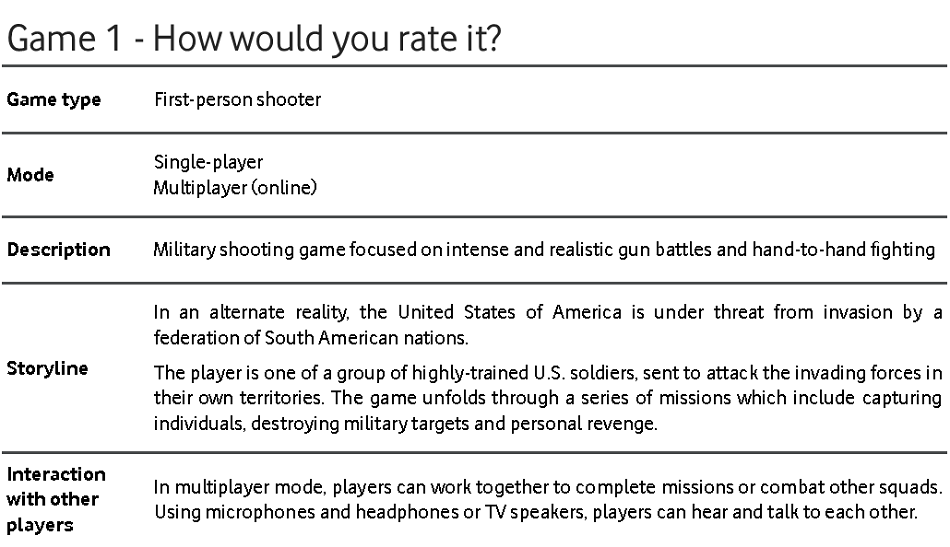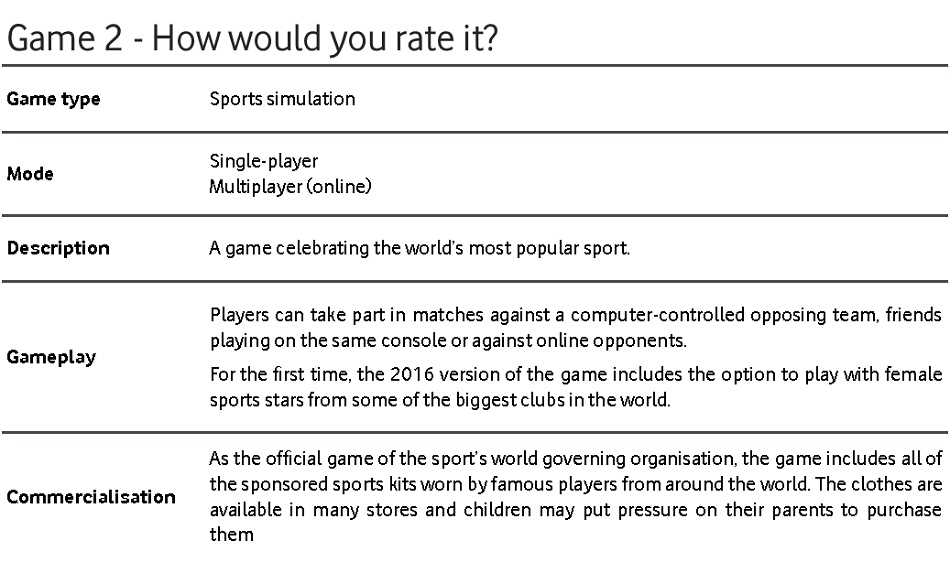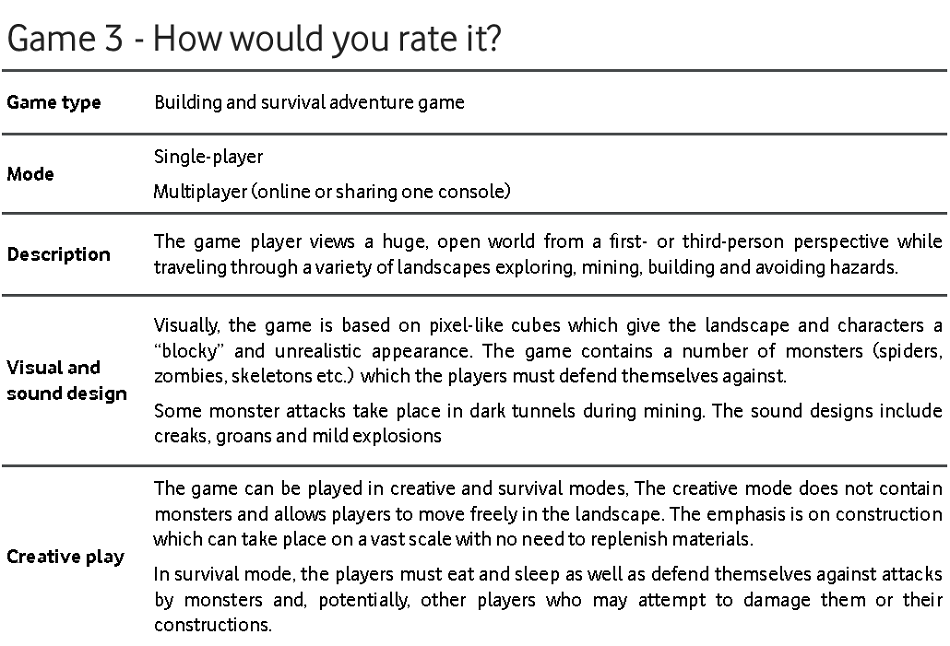A Digital Parents’ guide to games ratings
The world of video games can be overwhelming – there are hundreds of games on computer, tablets and smartphones, with more being added all the time. Keeping up with the names of what children are playing can be difficult enough, let alone working out what the games are about, how they work and whether or not they are suitable.
Vodafone AmanTECH is here to help, with our parents’ guide to gaming and games ratings. Let’s start with a short introduction just a few of the most popular types of games which your children may be playing:
Platform games
Some of the early games which parents may remember are platform games. Typically, the games are 2-dimensional and involve the character moving across a landscape avoiding obstacles in order to reach a goal. In the world of smartphone apps, platform games remain popular as they are suited to small screens and quick to play.
Shooter games
These action games involve the player using weapons to defeat enemies. Most of the time the weapons are ranged – guns, crossbows etc – although hand-to-hand combat often plays a part as well. Many games which contain violence are shooters and they are frequently rated Mature by the Entertainment Software Ratings Board.
Sports games
These are simply games based around popular sports, from football and basketball to car racing and golf. They are often suitable for all ages, although driving games based around street racing like can contain themes, language and images which some parents may not be comfortable with.
Fighting games
Typically involving one-to-one combat between opponents using fists, feet and handheld weapons, fighting games have been available for many years and remain popular to this day with children around the world. Some are relatively child friendly while in others the fighting is more realistic and detailed. .
Construction and creation
There are a number of very popular games with children which have elements of construction and creation in them. Theme Park allows players to use building blocks to create their own rollercoasters, while Roblox lets users create their own games which can then be played by other users from around the world.
Online interactions
For many parents, the way that children can interact with other people during online gaming is a big concern. Interactions may mean playing with and against other users, sending text messages or having conversations using a microphone and headphones. One of the challenges for Digital Parents is knowing how safe and secure these interactions are and who their children may be in contact with. To find out more about online interactions in gaming, visit our Games and Apps page.
How can Digital Parents’ find out if games are suitable for their children?
There are two main ways, apart from playing them yourself (which we do recommend), that parents can find out if the games their children want to play are suitable for their age and maturity. The first is by searching the web to get more information; the game creators’ websites will give details about the games, and Wikipedia and other information sites give detailed descriptions of the gameplay.
For information from and for parents, websites like Common Sense Media (English only) are also useful. Common Sense Media separates out information about the quality of the game for the player, and details about the type of content and what age it might be suitable for. It also contains reviews from other parents and children which may be helpful.
The second resource for Digital Parents who want to help their families enjoy the world of gaming safely and securely is games ratings. There are two main organisations – ESRB and PEGI – which rate games according to content and age. In many countries, it is illegal for shops to sell games to children under the age of the rating. Even where this is not the case, games ratings can be extremely useful for parents to quickly and easily find out information they need.
Entertainment Software Rating Board (ESRB)
ESRB ratings are used on video games around the world. The ratings are based on the content of the games and are split into five categories:
E – suitable for any age
E 10+ - suitable for over 10s, although parents may be happy for younger children to play them
T – suitable for teenagers
M – suitable for people aged 17 years and over
Finally, and infrequently used, is the Adult Only (AO) rating which is normally limited to games with a large amount of sexually explicit content, extremely graphic violence or gambling with real money.
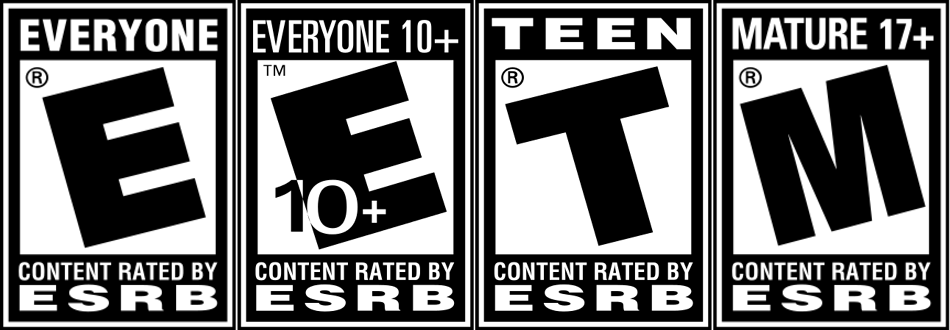
As well as the age categories, ESRB ratings add text to describe the content of the game. These might include: Violence, Drug References, Fantasy Violence or Blood and Gore.
Pan European Game Information (PEGI)
Although PEGI is based in Europe, the rating system is recognised around the world. Like ESRB, games are categorised by age group. PEGI, however, adds a system of images to give more information about the games’ content.
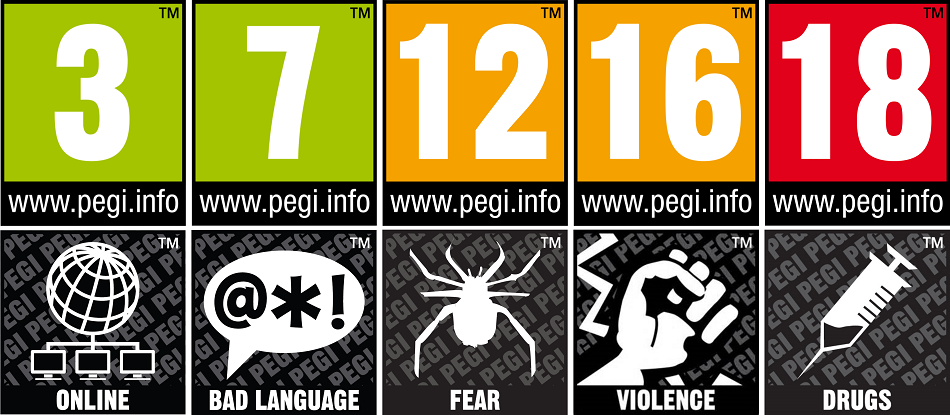
Smartphone games
There is no formal system for smartphone apps and games , although Apple, Google, Amazon and Microsoft all rate games by age. Many smartphones and tablets have parental control settings which allow Digital Parents to set limits to the types of apps that children can download on their internet-enabled devices. This can include blocking apps which cost money or invite users to make purchases in the game.
Finally - the Vodafone AmanTECH games ratings challenge…
There are three descriptions of very popular games below. The question is, can you identify the games from the descriptions? If you worked for PEGI or ESRB, how would you rate them?
